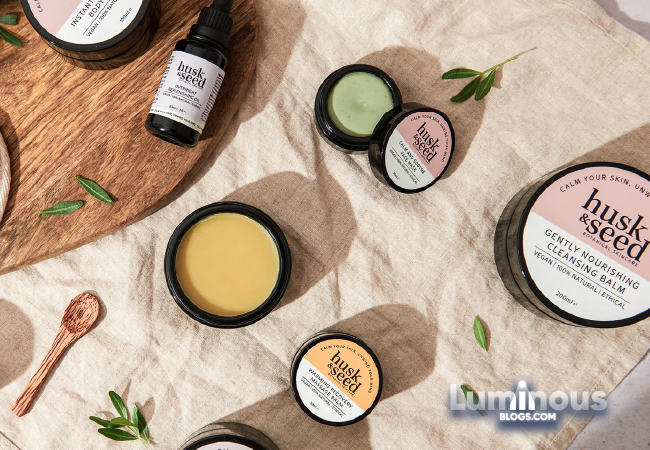In today's digital age, many of us spend hours each day working at our desks. Creating an ergonomic office space is not only essential for your physical health and comfort but can also significantly enhance your productivity. In this comprehensive guide, we'll explore the importance of ergonomics in the workplace and provide you with practical tips on how to design a comfortable and efficient workspace.
Understanding Ergonomics: A Path to Health and Efficiency
Ergonomics is the study of designing and arranging our physical environment to fit the capabilities and limitations of the human body. In the context of an office, it focuses on creating a workspace that promotes comfort, efficiency, and well-being.
The Health Benefits of Ergonomics
Creating an ergonomic office space offers numerous health benefits, including:
Reduced Risk of Musculoskeletal Disorders: Ergonomic setups reduce the risk of developing conditions like carpal tunnel syndrome and lower back pain.
Improved Posture: Proper ergonomics encourage better posture, reducing the strain on your neck, shoulders, and back.
Enhanced Blood Circulation: Ergonomic furniture and equipment promote good blood circulation, which is essential for overall health.
Increased Productivity: A comfortable workspace leads to better focus and higher productivity.
Choosing the Right Office Chair: The Foundation of Ergonomics
Your office chair is perhaps the most critical piece of furniture in your workspace. Here's what to consider:
Lumbar Support: Look for a chair with adjustable lumbar support to maintain the natural curve of your spine.
Seat Height and Depth: Choose a chair with adjustable seat height and depth to ensure your feet are flat on the floor, and your knees are at a 90-degree angle.
Armrests: Opt for a chair with adjustable armrests that allow your arms to rest comfortably and your shoulders to stay relaxed.
Swivel and Wheels: Make sure your chair can swivel and has wheels for easy movement and access to various parts of your desk.
The Perfect Desk: A Workspace Tailored to YouSelecting the right desk is another crucial step in creating an ergonomic office. Consider the following factors:
Desk Height: Ensure your desk height allows you to maintain a neutral wrist position when typing.
Surface Space: Choose a desk with ample surface space for your work tasks and equipment.
Adjustable Desks: If possible, invest in an adjustable standing desk to alternate between sitting and standing throughout the day.
Cable Management: Keep your cables organized and out of the way with cable management solutions.
The Role of Monitor Placement: Reducing Neck Strain
The positioning of your computer monitor is vital for preventing neck strain and eye discomfort:
Eye Level: Adjust your monitor so that the top of the screen is at or just below eye level.
Distance: Maintain a distance of about 20-30 inches between your eyes and the monitor.
Monitor Tilt: Tilt the monitor slightly upward to reduce glare and maintain a comfortable viewing angle.
The Keyboard and Mouse: Your Connection to the Digital World
Your keyboard and mouse should support a neutral wrist position:
Keyboard Height: Adjust your keyboard height so that your wrists are in a straight, neutral position when typing.
Mouse Comfort: Use a mouse that allows your hand to remain in a relaxed, neutral position.
Keyboard Tray: Consider using a keyboard tray to maintain proper wrist alignment.
Monitor Accessories: Extras for Added Comfort
Accessories can further enhance your ergonomic workspace:
Monitor Stand: Elevate your monitor with a stand to achieve an optimal viewing height.
Anti-Glare Filters: Reduce screen glare with anti-glare filters for your monitor.
Laptop Stand: If using a laptop, place it on a laptop stand to achieve a more comfortable viewing angle.
Task Lighting: Reducing Eye Strain
Proper lighting is essential for reducing eye strain:
Task Lighting: Use task lighting to illuminate your workspace evenly without causing glare on your screen.
Adjustable Brightness: Opt for lighting with adjustable brightness to adapt to different tasks.
Cable Management: An Organized Workspace
Cable management is essential for maintaining a tidy workspace:
Cable Clips: Use cable clips or organizers to keep cords neat and prevent tripping hazards.
Cable Sleeves: Cable sleeves can bundle cables together for a cleaner look.
Footrests and Anti-Fatigue Mats: Additional Comfort Aids
Footrests and anti-fatigue mats can provide added comfort:
Footrests: A footrest can help support your feet and reduce pressure on your lower back.
Anti-Fatigue Mats: Anti-fatigue mats can cushion your feet and reduce strain if you're standing at your desk.
Ergonomic Accessories: Improving Comfort and Efficiency
Several ergonomic accessories can further enhance your workspace:
Ergonomic Keyboard and Mouse Pad: These accessories offer wrist support and reduce strain.
Document Holder: A document holder can keep reference materials at eye level to prevent neck strain.
Ergonomic Phone Stand: Elevate your phone to eye level to minimize neck discomfort during calls.
Wrist Rests: Wrist rests can support your wrists when typing and reduce strain.
Regular Breaks: The Importance of Movement
Taking regular breaks is essential for maintaining your well-being and productivity. Incorporate short breaks throughout your day to stretch, move around, and rest your eyes. Consider following the Pomodoro Technique, which encourages work intervals followed by short breaks.
Work Habits and Posture: Practicing Ergonomics Daily
Creating an ergonomic office is just the first step. To fully benefit from ergonomics, practice the following habits:
Proper Posture: Maintain good posture by sitting back in your chair, keeping your feet flat on the floor, and aligning your back with the chair's lumbar support.
Frequent Movement: Change your sitting position regularly and stand up at your adjustable desk when needed.
Eye Rests: Follow the 20-20-20 rule: every 20 minutes, take a 20-second break, and look at something 20 feet away to rest your eyes.
Keyboard and Mouse Use: Use a light touch when typing and minimize unnecessary pressure on your keyboard and mouse.
Avoid Overreaching: Keep essential items and tools within arm's reach to avoid overreaching and straining.
Monitor Viewing Distance: Ensure you're at the appropriate distance from your monitor to minimize eye strain.
Regular Ergonomic Assessments: Stay in Top Shape
Conduct regular assessments of your ergonomic workspace to ensure it continues to meet your needs. Make necessary adjustments and upgrades to maintain an ergonomic and comfortable environment.
Conclusion: Elevate Your Comfort and Productivity
Creating an ergonomic office is a valuable investment in your health, well-being, and productivity. By following the principles of ergonomics and implementing the tips provided in this guide, you can design a comfortable workspace that supports your physical health and enhances your efficiency. Remember that the benefits of ergonomics extend beyond the workplace and positively impact your overall quality of life. So, take the time to create a workspace that prioritizes comfort, and enjoy the lasting benefits it brings to your daily life.
Owning a car is a significant investment, and proper maintenance is the key to ensuring it runs smoothly, remains safe, and retains its value. In this blog, we'll explore essential car care tips to help you keep your vehicle in top condition. Whether you're a seasoned car owner or a new driver, these maintenance practices will help you take care of your vehicle and extend its lifespan.
Regular Oil Changes: Engine Lifeline
Oil is the lifeblood of your car's engine, and regular oil changes are crucial to its health. Check your car's owner's manual for the recommended oil change interval, but a general rule of thumb is every 3,000 to 5,000 miles. Fresh oil helps keep your engine lubricated, cool, and running efficiently.
Tire Maintenance: Traction and Safety
Tires are a vital component of your car's safety and performance. Check the tire pressure regularly and maintain it within the manufacturer's recommended range. Over or underinflated tires can affect fuel efficiency and handling. Don't forget to inspect the tread for wear and tear, and replace tires when the tread depth becomes insufficient.
Brakes: Your Stopping Power
Regular brake maintenance is crucial for your safety on the road. Pay attention to signs like squeaking or grinding noises, a spongy brake pedal, or reduced braking efficiency. Brake pads and rotors may need replacement periodically. Don't delay brake repairs, as failing brakes can lead to accidents.
Fluid Checks: Keep Things Flowing
Various fluids are essential for your car's operation, including coolant, transmission fluid, brake fluid, and power steering fluid. Regularly check fluid levels and quality, and ensure they are at the right levels. If you're unsure, consult your car's manual or a mechanic for guidance.
Battery Health: Stay Powered Up
A weak or dead battery can leave you stranded. Clean the battery terminals regularly, and check the battery's voltage using a multimeter. If the battery is aging or struggling, it's wise to replace it before it fails unexpectedly.
Air Filters: Breathe Easy
Air filters prevent contaminants from entering your engine or cabin. Depending on your vehicle, you may have both engine and cabin air filters. Regularly inspect and replace them when they become clogged or dirty, which can impact engine efficiency and air quality.
Regular Washes and Wax: Protect Your Paint
A clean car not only looks better but also retains its value. Regularly wash your car to remove dirt and contaminants. Additionally, waxing your car provides a protective barrier against UV rays, rust, and environmental damage.
Scheduled Maintenance: Follow Your Car's Plan
Consult your car's owner's manual for a maintenance schedule. Stick to the recommended service intervals for tasks like engine tune-ups, filter replacements, and inspections. Properly maintained vehicles tend to be more reliable and last longer.
Belts and Hoses: Keep Them Intact
Check the condition of belts and hoses under the hood. Over time, they can become cracked or brittle, potentially leading to engine problems or overheating. If you notice any signs of wear or damage, have them replaced.
Keep It Clean: Interior Care
Car maintenance isn't limited to the mechanics under the hood. Keep the interior clean and well-maintained. Regularly vacuum the upholstery and carpets, clean the dashboard and windows, and protect the surfaces from UV damage to maintain the car's resale value.
Cooling System: Prevent Overheating
Your car's cooling system is crucial to prevent engine overheating. Regularly check the coolant level and the condition of hoses and the radiator. Over time, coolant can become acidic and less effective, so it's essential to flush and replace it per your car's service schedule.
Suspension System: A Smooth Ride
The suspension system affects your car's ride comfort and handling. Ensure that the shocks, struts, and springs are in good condition. Signs of a failing suspension system include a bumpy ride, drifting, or uneven tire wear.
Wiper Blades: Clear Vision
Wiper blades are often overlooked until they're needed. Regularly inspect them for signs of wear or streaking. It's essential to have efficient wiper blades to maintain visibility during rain or snow.
Check Engine Light: Listen to Your Car
If your car's check engine light comes on, don't ignore it. The light can indicate various issues, from minor concerns to significant problems. Have the car diagnosed as soon as possible to avoid potential damage.
Tire Alignment and Balancing: Even Tread Wear
Maintaining proper tire alignment and balance ensures even tire wear, improved fuel efficiency, and a smoother ride. Check alignment periodically and have your tires balanced during regular rotations.
Fuel Efficiency: Drive Smart
Your driving habits significantly impact your car's performance and fuel efficiency. Avoid aggressive acceleration and hard braking, and maintain a consistent speed to save fuel and reduce wear and tear on your vehicle.
Keep Emergency Essentials: Be Prepared
In case of a roadside emergency, it's essential to keep emergency essentials in your car. Items like a spare tire, jack, jumper cables, a flashlight, and a first-aid kit can be lifesavers.
Owner's Manual: Your Maintenance Bible
Your car's owner's manual is a valuable resource. It provides information on recommended maintenance schedules, proper tire pressure, and essential troubleshooting tips. Keep it in your glove compartment for easy reference.
Tire Rotation: Equal Wear Distribution
Regular tire rotation ensures even wear across all tires, extending their lifespan. The interval for tire rotation varies by the type of vehicle so consult your car's manual for guidance.
Vehicle Inspections: Professional Expertise
While you can perform many car maintenance tasks yourself, having your car inspected by a professional is essential. Regular inspections can identify potential issues before they become major problems.
Drive Responsibly: Protect Your Car
Your driving habits significantly impact your car's longevity. Avoid harsh acceleration, abrupt braking, and speeding to reduce wear and tear on the engine and braking systems.
Environmentally Friendly Driving: Reduce Emissions
Consider adopting eco-friendly driving habits, such as carpooling, using public transportation, or purchasing a fuel-efficient or electric vehicle, to reduce your carbon footprint and protect the environment.
Conclusion: Caring for Your Vehicle, Extending Its Life
Car care isn't just about keeping your vehicle running; it's about protecting your investment, ensuring safety, and contributing to a more sustainable environment. Regular maintenance can help you avoid costly repairs and keep your car in excellent condition for years to come. By following these essential maintenance tips, you can enjoy a smoother, safer, and more cost-effective driving experience.
Introduction
Nutrition plays a fundamental role in our overall well-being. A balanced diet is not just a component of physical health but is also intricately linked to our mental and emotional well-being. It's the foundation upon which we build a healthy, vibrant life. In this blog, we will explore the importance of nutrition for wellness, dissect what constitutes a balanced diet, and offer practical tips on how to make healthier food choices that contribute to your long-term health and vitality.
The Significance of Nutrition for Wellness
Before we dive into the details of building a balanced diet, it's crucial to understand why nutrition is so essential for overall wellness. Proper nutrition offers numerous benefits:
Physical Health: Nutrition fuels the body, providing the energy and nutrients needed for growth, repair, and daily functioning. A well-balanced diet can help prevent chronic diseases, maintain a healthy weight, and promote optimal organ function.
Mental Well-Being: What we eat can influence our mood and cognitive function. Nutrient-rich foods provide the brain with the essential building blocks to maintain mental clarity and emotional balance.
Emotional Health: Good nutrition can positively impact emotional well-being. Properly nourished bodies are more resilient to stress, anxiety, and depression.
Longevity: A balanced diet is associated with increased longevity and a lower risk of age-related diseases.
Better Digestion: Proper nutrition can help maintain a healthy digestive system, reducing the risk of gastrointestinal disorders.
Strengthened Immunity: A balanced diet fortifies the immune system, making it more resilient to infections and illnesses.
Components of a Balanced Diet
A balanced diet consists of a variety of foods that provide the body with the necessary nutrients in the right proportions. These key components form the foundation of a well-balanced diet:
Carbohydrates: Carbohydrates are the body's primary source of energy. Opt for complex carbohydrates like whole grains, legumes, and vegetables. Limit the consumption of simple carbohydrates found in sugary snacks and refined grains.
Proteins: Proteins are essential for growth, tissue repair, and muscle function. Include lean sources of protein such as poultry, fish, lean meats, tofu, and legumes in your diet.
Fats: Healthy fats, like those found in avocados, nuts, seeds, and olive oil, are crucial for brain health and the absorption of fat-soluble vitamins. Limit saturated and trans fats found in processed and fried foods.
Fiber: A diet rich in fiber supports digestion and helps maintain healthy blood sugar levels. Whole grains, fruits, vegetables, and legumes are excellent sources of dietary fiber.
Vitamins and Minerals: Include a variety of fruits and vegetables in different colors to ensure you're getting a wide range of vitamins and minerals. These micronutrients play a critical role in maintaining various bodily functions.
Water: Staying hydrated is essential for overall health. Water helps regulate body temperature, transports nutrients, and eliminates waste products. Aim for at least eight glasses of water per day, and adjust based on your activity level and climate.
Dietary Sources of Nutrients: Consider dietary sources of nutrients, but supplements can be beneficial if there are specific deficiencies or dietary restrictions. Consult with a healthcare professional before taking any supplements.
Practical Tips for Building a Balanced Diet
Prioritize Whole Foods: Whole, unprocessed foods are the cornerstone of a balanced diet. These foods are rich in nutrients and provide the body with the necessary fuel for optimal function.
Portion Control: Be mindful of portion sizes to avoid overeating. Use smaller plates and listen to your body's hunger cues.
Meal Planning: Plan your meals and snacks in advance to ensure you have balanced options readily available. This reduces the temptation to grab unhealthy fast food or snacks.
Mindful Eating: Pay attention to what and how you eat. Avoid distractions while eating, savor your food, and listen to your body's hunger and fullness signals.
Variety is Key: Eating a wide variety of foods ensures you receive a broad spectrum of nutrients. Aim to consume different fruits, vegetables, grains, and proteins.
Reduce Processed Foods: Minimize your intake of processed and fast foods, as they often contain excess salt, sugar, and unhealthy fats.
Limit Added Sugars and Salt: Check food labels for hidden sugars and excess salt. Reducing these additives can benefit your heart and overall health.
Cook at Home: Cooking at home allows you to control the ingredients and cooking methods, ensuring a healthier meal.
Balance Macronutrients: Aim to distribute your calories from macronutrients (carbohydrates, proteins, and fats) in a balanced way, ensuring none of them are overly dominant.
Hydrate Wisely: Replace sugary and high-calorie drinks with water or herbal teas. Limit the consumption of sodas and artificially sweetened beverages.
Limit Alcohol: Consume alcohol in moderation, if at all. Excessive alcohol consumption can have adverse effects on health.
Conclusion
Building a balanced diet is a vital step toward achieving and maintaining overall wellness. A well-balanced diet supports physical, mental, and emotional health, and it can lead to a longer, more vibrant life. By prioritizing whole foods, portion control, and mindful eating, you can harness the power of nutrition to fuel your body and mind. In your journey toward better health, remember that small, sustainable changes in your dietary choices can make a significant impact on your overall wellness.
The quest for beauty and radiant skin has been a timeless pursuit. While there's a plethora of skincare and haircare products available on the market, many individuals are turning to natural and homemade remedies to enhance their beauty routines. Natural beauty remedies not only offer the benefit of being free from harsh chemicals but also promote a holistic approach to self-care. In this blog, we will delve into the world of natural beauty remedies, exploring DIY tips for skin and hair that can help you achieve a healthy and vibrant appearance while celebrating the gifts of nature.
Understanding Natural Beauty Remedies
Natural beauty remedies harness the power of various natural ingredients, such as fruits, herbs, oils, and more, to address common skincare and haircare concerns. These remedies often rely on time-tested traditions and the wisdom of generations, offering a sustainable and eco-friendly alternative to commercial beauty products.
By incorporating natural ingredients into your beauty routine, you can enjoy a range of benefits, including:
Gentle on Skin and Hair: Natural ingredients are generally milder and less likely to cause skin or hair irritations compared to synthetic chemicals.
Environmentally Friendly: Using natural ingredients often means reducing the environmental impact of your beauty routine. Many natural remedies can be sourced sustainably.
Cost-Effective: Natural beauty remedies can be more budget-friendly than store-bought products. Many ingredients are readily available and affordable.
Customization: You have the freedom to tailor natural remedies to your specific needs and preferences.
Holistic Approach: Natural remedies often incorporate aromatherapy and other holistic practices that benefit not only your physical appearance but also your mental and emotional well-being.
DIY Tips for Healthy and Glowing Skin
Honey Face Mask: Honey is a natural humectant, which means it helps lock in moisture. Create a honey face mask by applying raw honey to your face and leaving it on for 15-20 minutes. Rinse with warm water for a natural glow.
Oatmeal Scrub: Oatmeal is an excellent exfoliant that gently removes dead skin cells. Mix ground oatmeal with water to form a paste, then apply it to your face, gently scrubbing in circular motions.
Aloe Vera Gel: Aloe vera has soothing and hydrating properties. Apply aloe vera gel directly to your skin to soothe irritation, reduce redness, and hydrate dry skin.
Tea Tree Oil for Acne: Diluted tea tree oil can help combat acne. Mix a few drops of tea tree oil with a carrier oil, like coconut oil, and apply it to blemishes.
Cucumber Slices: Place cucumber slices on your eyes to reduce puffiness and refresh tired eyes. Cucumber has natural anti-inflammatory properties.
DIY Tips for Healthy and Shiny Hair
Coconut Oil Hair Mask: Coconut oil is a fantastic natural hair conditioner. Warm some coconut oil and apply it to your hair, leaving it on for at least 30 minutes or overnight for deep conditioning. Wash it out thoroughly.
Egg White Mask: Egg whites are rich in proteins that can strengthen hair. Beat an egg white and apply it to your hair, focusing on the roots. Leave it on for 20 minutes and rinse with cool water.
Avocado Hair Mask: Avocado is packed with healthy fats and vitamins that nourish your hair. Mash a ripe avocado and apply it to your hair, leaving it on for 30 minutes before rinsing.
Hibiscus Rinse: Hibiscus flowers are known to boost hair growth and prevent premature graying. Boil hibiscus flowers in water, strain, and use the liquid as a hair rinse.
Apple Cider Vinegar Rinse: A diluted apple cider vinegar rinse can help balance your hair's pH, reduce dandruff, and add shine. Mix one part apple cider vinegar with three parts water and apply it to your hair after shampooing.
Caution and Allergy Considerations
While natural remedies can be gentle and effective, it's important to be aware of any potential allergies or skin sensitivities. Before applying any new ingredient to your skin or hair, it's advisable to perform a patch test. Apply a small amount of the ingredient on your forearm or behind your ear and wait for 24 hours to check for any adverse reactions.
Conclusion
Natural beauty remedies offer a wonderful way to enhance your skincare and haircare routines while celebrating the gifts of nature. By incorporating these DIY tips into your daily regimen, you can achieve healthy and radiant skin and hair without relying on harsh chemicals or synthetic products. Embrace the beauty of natural ingredients, customize your beauty routine to your unique needs, and enjoy the benefits of a holistic approach to self-care. In your quest for beauty, remember that nature has provided us with a treasure trove of remedies waiting to be explored.

Get $15 Off Sitewide











